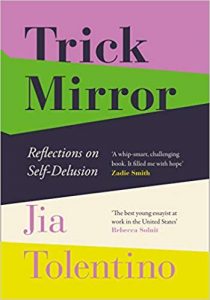The titular Palaces for the People in Eric Klinenberg’s latest book are libraries, so described by Andrew Carnegie as he built 2,800 of them in a lasting act of philanthropy. The book is a hymn of praise to libraries in particular but also all the other components of ‘social infrastructure’, places where people meet face to face and form relationships that are the warp and weft of a resilient society. This includes school playgrounds, local sports pitches, some bookshops and cafes, parks – the locations of community. The book starts with Klinenberg’s earlier work, reported in the excellent Heatwave, which explored why certain apparently similar communities experienced very different ‘excess’ death rates in the 1995 Chicago heatwave.
Palaces for the People: How to Build a More Equal and United Society picks up from this, pointing out near the start that having strong social capital in the heatwave was equivalent, in terms of mortality outcomes, to having an airconditioner in every home. One of the aspects of the new book I like is its emphasis on the interactions between different kinds of wealth – not only social but also conventional ‘grey’ infrastructure and the natural too. It’s long been obvious to me that there is no point in investing in concrete if you don’t think about natural capital alongside it, flood defences being the canonical example: green infrastructure such as downstream wetlands can be far more effective. Klinenberg points out they can also be designed as social infrastructure – put a park there, make a feature of the green space for enjoyment and also people’s physical and mental health, and the benefit of community relations.
The book distinguishes the social infrastructure from the social capital it enables to be built on top of it, a distinction I haven’t thought about a lot. Another point is that this lens puts the focus on place-based policies, rather than on individuals. In the heatwave example, all the individual characteristics an economist would typically control for on the right hand side a regression would have led you to predict the same mortality outcomes in all the deprived areas of Chicago, whereas it was the place they lived rather than their level of education or criminal record that affected people’s probability of succumbing to the heat.
As the book concludes, there are two reasons to think seriously about reinvesting in social and natural as well as conventional infrastructure. Climate change is one reason – New York City is going to end up under the sea. Concrete alone won’t prevent that. When a crisis hits, the only thing left to help people cope – is other people. The other is the all-too-evident impact of deindustrialization. The chickens of the 1980s and 90s have come home to roost, and they turn out to be monsters. Yet governments on both sides of the Atlantic are still cutting the facilities that make it possible for people with not much money and little hope for the future to cope: parks, playing fields – and libraries. The book doesn’t actually answer the ‘how’ of it’s subtitle, but it’s well worth a read.
[amazon_link asins=’1847924999′ template=’ProductAd’ store=’enlighteconom-21′ marketplace=’UK’ link_id=’6d2697b4-1004-11e9-9a3c-bd2efad8bb98′]


